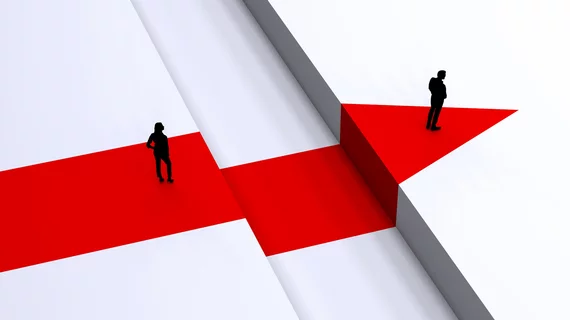Radiology’s gender gap only widened with the COVID-19 pandemic
Radiology’s gender gap has only widened with the COVID-19 pandemic, according to research published March 21 in Clinical Imaging [1].
Numerous studies have explored the specialty’s imbalance, with men accounting for a larger portion of the workforce while also earning more for the same job. Fatemeh Khounsarian, MD, and colleagues sought to check in on this issue, performing a systematic literature review.
“Despite the demonstrated benefits of gender diversity in medicine, women in radiology in North America are still underrepresented,” Khounsarian, with the faculty of medicine at the University of British Columbia, Canada, and co-authors advised.
Their review tapped several research databases for information spanning between 2000 and 2022. The final sample included a total of 22 articles that underwent a full-text review. Across all investigated subspecialties, women constituted a minority, with breast imaging the only exception (at 79%). In abdominal imaging, women account for about 35% of specialists versus 28% in musculoskeletal care, 23% in neuroradiology, 45% in pediatrics, and 20% in nuclear medicine. This gap also exists in academic leadership and research productivity, “which the COVID-19 pandemic has further exacerbated,” the authors noted.
Reasons for the gap include a lack of female role models, limited preclinical contact, and a high rate of burnout, as women often handle a larger share of household duties.
“Several complementary and supplementary steps can enhance gender diversity in radiology,” Khounsarian and co-authors wrote. “These include increasing education and exposure to radiology at earlier stages and optimizing mentorship opportunities to attract a more diverse pool of talent to the discipline. In addition, supporting resident parents and enhancing the residency program's culture can decrease the rate of burnout and encourage women to pursue careers and leadership positions in radiology.”
Read more, including potential study limitations, in the official journal of the New York Roentgen Society at the link below.

